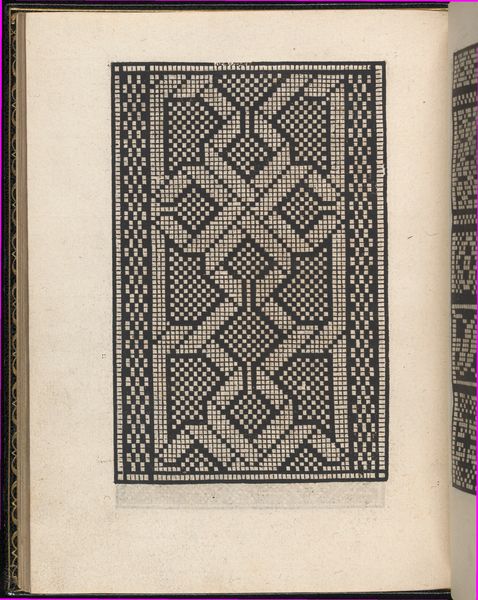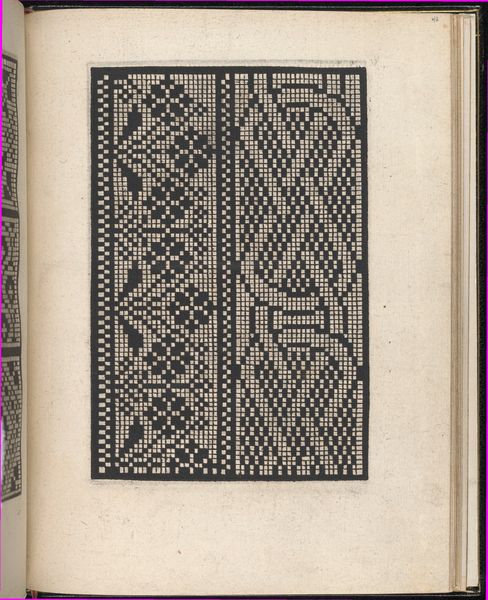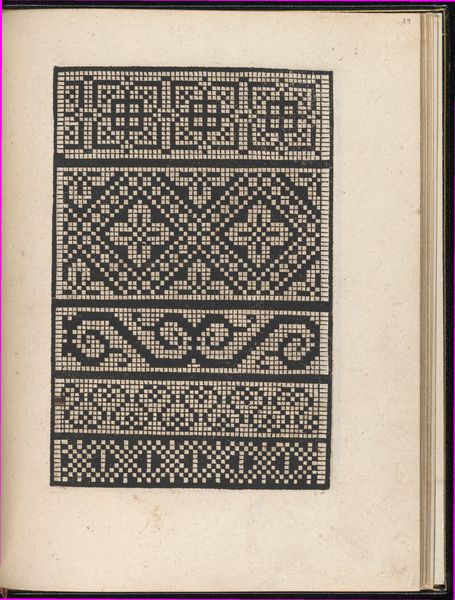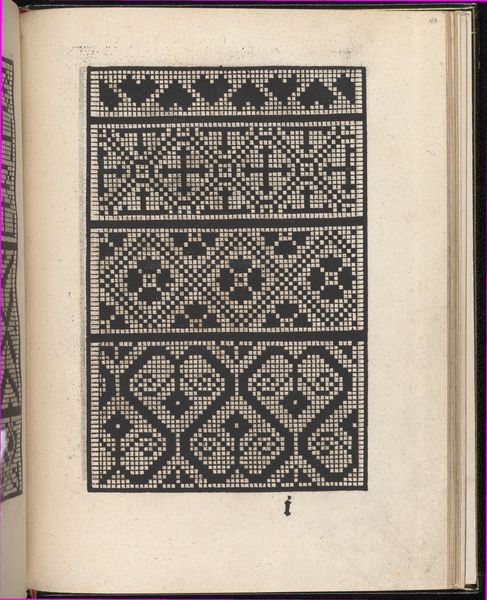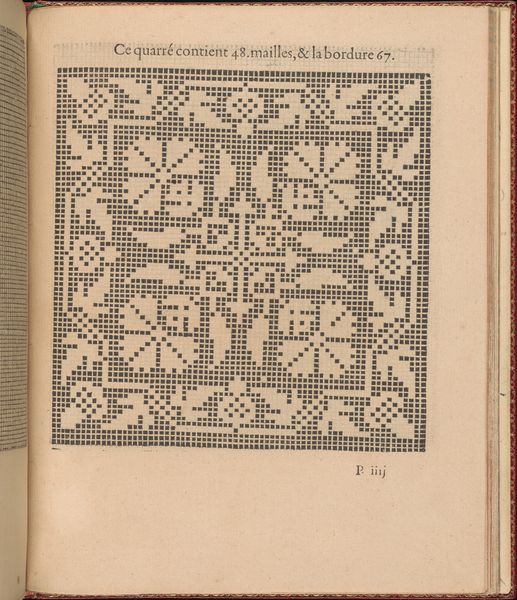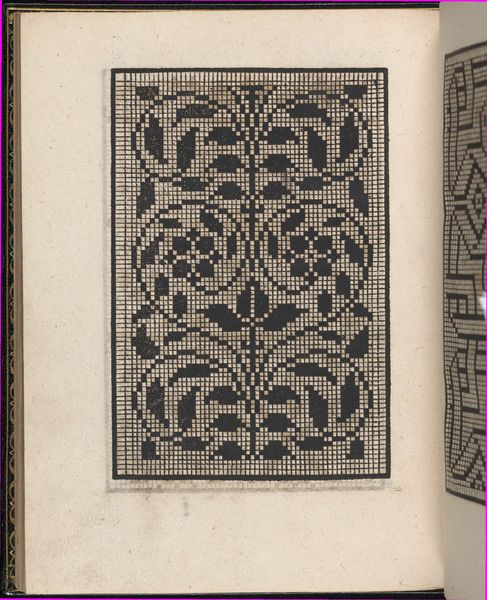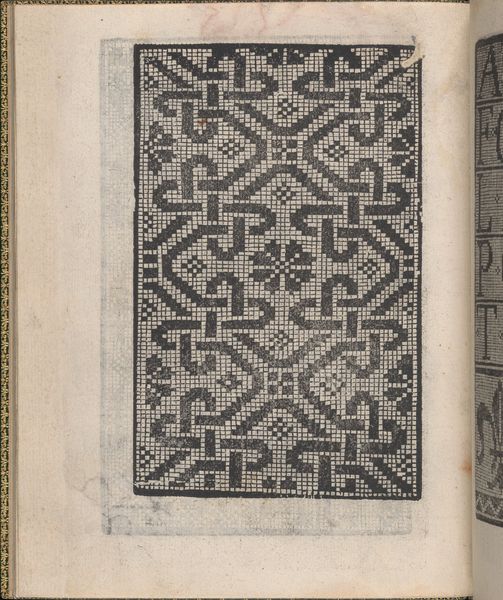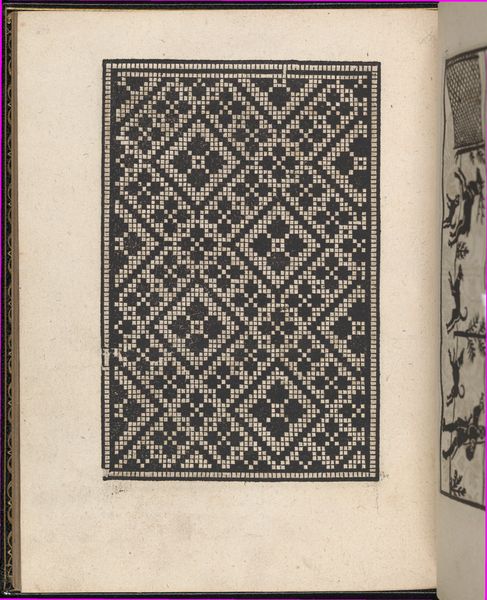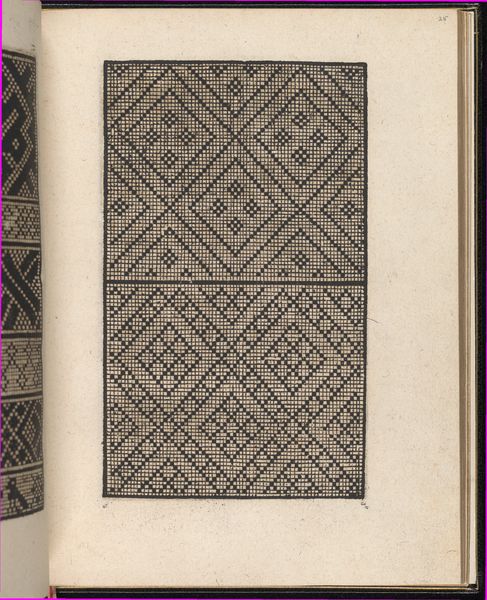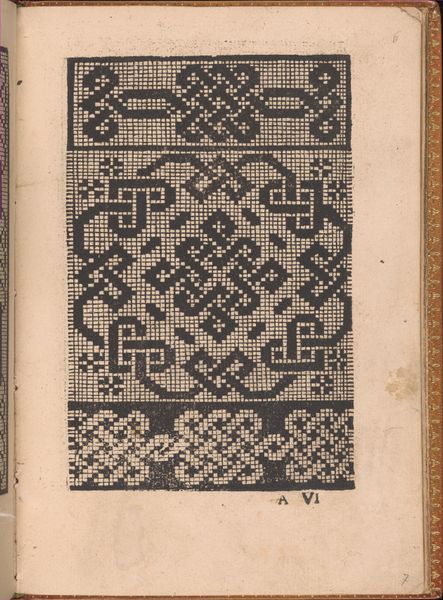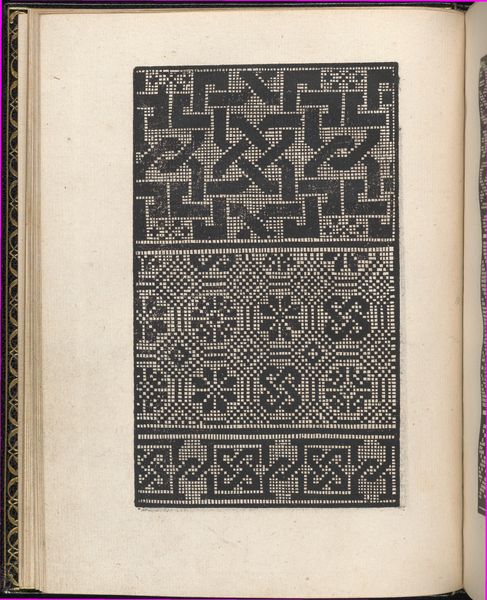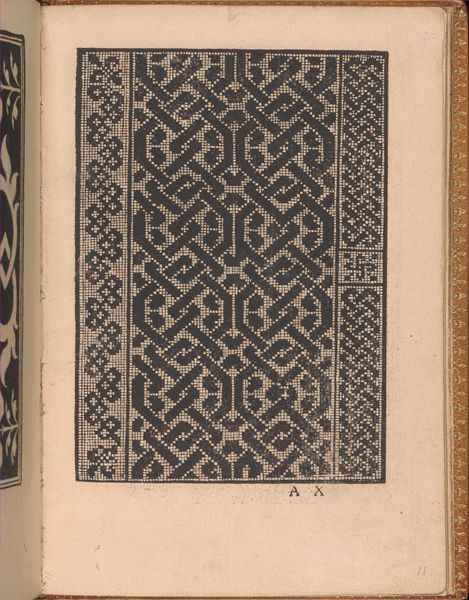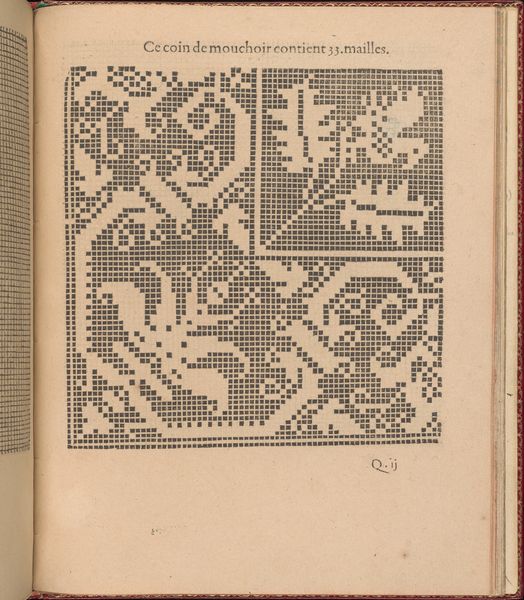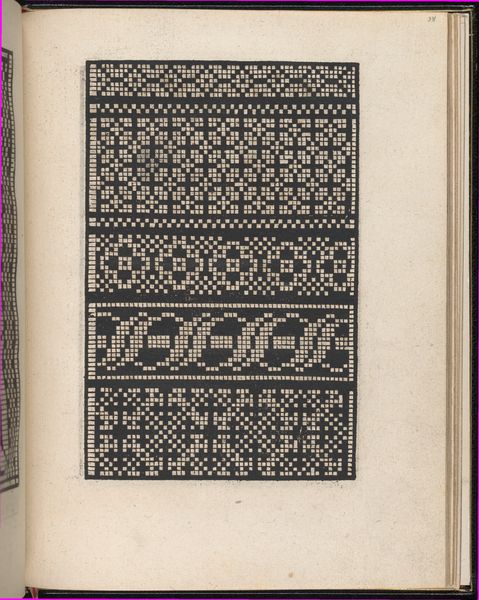
Page from Ein new kunstlich Modelbuch...(Page 41r) 1544
0:00
0:00
ornament, print
#
ornament
# print
#
book
#
geometric
Dimensions: Overall: 7 11/16 x 5 7/8 in. (19.5 x 15 cm)
Copyright: Public Domain
Curator: Looking at this image, I am struck by its complexity and precision. This is a page from *Ein new kunstlich Modelbuch…*, or *A New Artificial Pattern Book*, created in 1544 by Peter Quentel. Editor: It's visually arresting! My first impression is how maze-like the ornament appears; it has a graphic quality despite being almost five centuries old. Curator: Yes, exactly! Notice the artist's use of interlocking geometric forms, almost labyrinthine. The visual weight is beautifully distributed, guiding the eye across the matrix. It almost demands careful analysis to deconstruct it. Editor: Labyrinths were definitely a key motif in the Renaissance, charged with philosophical and spiritual significance. In this piece, each carefully placed square functions almost like a coded unit, speaking to larger ideas about order and knowledge in the cosmos. It makes me think about ideas from sacred geometry and also personal journeys, as the eye and mind navigates the grid. Curator: It's an intricate balancing act, the positive and negative spaces at play, that gives the design its life. You can imagine, based on the "Modelbuch" title, how these were guides for artisans and embroiderers. These designs gave creative expression in daily life. Editor: Right. Imagine the symbolic weight placed on adornment and embroidery at this time—a sort of silent visual language expressing status, belief, cultural affiliation. It becomes more than mere decoration but something interwoven with life itself. Curator: Indeed, by employing an intense focus on pure form, we begin to understand the underlying visual systems and rules that governed its creation and use. It goes beyond pure function and becomes a window into its world. Editor: It leaves me thinking about our shared human drive to create patterns and project meaning, especially in ways that blend tradition and personal innovation. I can also see these symbols resurfacing subconsciously throughout visual history in varying applications and styles. Curator: Considering its precise and constructed arrangement, it brings us to a better appreciation of the historical perspective as we visually analyze it. Editor: A lovely perspective and I now also wonder about the conversations this little piece once sparked around innovation.
Comments
No comments
Be the first to comment and join the conversation on the ultimate creative platform.
